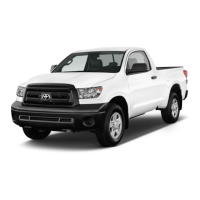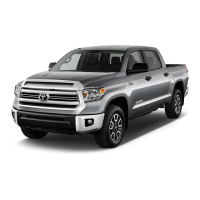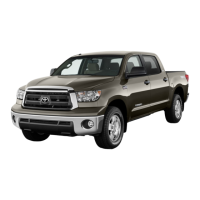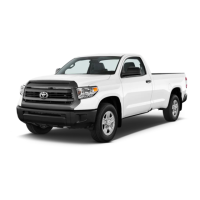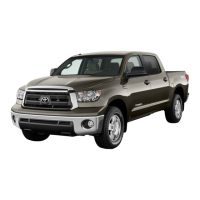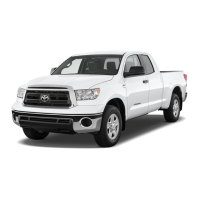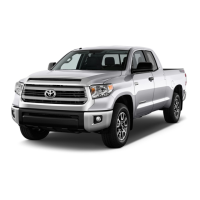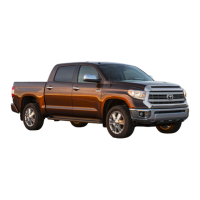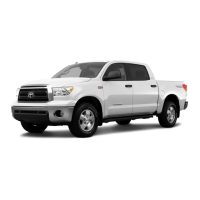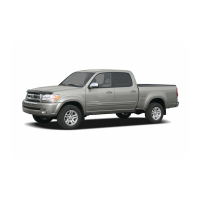Do you have a question about the Toyota TUNDRA 2018 and is the answer not in the manual?
Overview of the guide's purpose and scope.
Emphasizes reviewing the Owner's Manual for safe operation and understanding vehicle capabilities.
Layout and functions of gauges, indicators, and switches on the instrument panel.
Operation of buttons and switches on the steering wheel for various functions.
Operation of shifter, climate, audio, power outlets, and safety system switches.
Explanation of tachometer, speedometer, fuel gauge, and information displays.
Meaning of various warning and indicator lights for vehicle status and alerts.
Instructions for unlocking, locking, and using the panic button.
How to adjust the brightness of the instrument panel illumination.
Procedures for accessing the fuel tank and engine compartment.
Locations of key fluid reservoirs and components for engine maintenance.
Details on shift-linked, speed-linked, and door-linked locking/unlocking.
Instructions for adjusting, folding, and extending power outside rear view mirrors.
Explanation of park, reverse, neutral, drive, and sport modes for floor/column shifters.
How to use manual shifting for better control during driving.
Procedures for adjusting the steering wheel's tilt and telescopic position manually or with power.
How to use the power door lock switches located on the driver's door.
Operation of headlights, parking lights, DRL, and high beam flasher.
How to use fog lights and turn signals for lane changes and turns.
Adjusting the vertical aim of the headlights using the control dial.
Operation of intermittent and continuous wipers, and washer fluid activation.
Using power window switches and the window lock function.
How to operate the power back window on different cab models.
Instructions for sliding and tilting the vehicle's moonroof.
How to apply and release the parking brake.
How to adjust manual seats for split and bench configurations.
Operation of power seat position, angle, height, cushion, and lumbar support.
How to adjust the power passenger seat position, angle, and lumbar support.
Steps to fold down the rear seats for increased cargo capacity.
Procedure for adjusting and removing head restraints for optimal safety.
Operation of automatic temperature, fan speed, and air intake adjustments.
Using manual controls for fan speed, temperature, and air intake selection.
Operation of seat heaters and ventilators for driver and front passenger comfort.
How to use the backup camera display and adjust its settings for optimal visibility.
Using the touch screen, buttons, and steering wheel controls for audio functions.
Functionality of volume, search, and mode/hold buttons on the steering wheel.
Connecting portable audio devices via USB or AUX input.
How to scroll through and display trip, vehicle, and warning information.
Identifying the location of 12V power outlets in bucket and bench seat configurations.
Using steering wheel buttons for making, receiving, and ending calls via Bluetooth.
How to operate the 2WD, 4H, and 4L drive selectors for different terrain.
How to use the trailer brake controller to manage trailer braking.
How Tow/Haul mode enhances performance for heavy loads and towing.
How the system assists with gear selection for uphill and downhill driving.
How to switch between TRAC, VSC, and Auto LSD modes.
Operation of BSM for lane changes and RCTA for rearward alerts.
How the sonar system detects obstacles and provides audible and visual alerts.
Programming and operation of the HomeLink system for garage doors.
Identification of bottle holder positions in front and rear doors.
Locating cup holders in the center console and rear seating areas.
Description of PCS, LDA, DRCC, and AHB safety technologies.
Explanation of the camera and radar sensors supporting TSS-P systems.
How PCS detects vehicles/pedestrians, warns, and applies brakes.
Details on audible warnings, messages, and braking assistance from PCS.
How the system detects pedestrians and its operational limitations.
Steps to change the sensitivity for the Pre-Collision System.
Procedure to turn the Pre-Collision System on or off.
How LDA detects lane departures and provides alerts to the driver.
How LDA functions are displayed and system operation status indicators.
Steps to customize the sensitivity of Lane Departure Alert warnings.
How SWS detects and alerts about vehicle swaying and driver inattentiveness.
Steps to disable SWS and adjust its sensitivity settings.
How to turn DRCC on/off and adjust the set speed.
Steps to change the vehicle-to-vehicle following distance settings.
Procedure to switch from DRCC to standard constant speed cruise control.
Steps to enable and disable the automatic high beam headlights.
Conditions for automatic activation and deactivation of high beams.
Proper use of seat belts and adjusting shoulder belt anchors.
How to reset the TPMS after tire pressure adjustments.
How to engage and disengage child safety locks on rear doors.
Finding the spare tire, jack, and tools for emergency use.
Overview and detailed explanation of ABS, BA, EBD, SST, TRAC, and VSC.
How TRAC maintains traction on slippery surfaces.
How Trailer Sway Control detects and suppresses trailer movement.
Guidelines for installing Toyota floor mats securely.
Introduction to pairing phones for hands-free calling and audio.
Step-by-step guide to connect an Android phone to the Entune system.
Steps for pairing the phone with the vehicle's multimedia unit.
Granting Entune access to phone's messages and contacts for full functionality.
Step-by-step guide to connect an iPhone to the Entune system.
Steps for pairing the iPhone with the vehicle's multimedia unit.
Granting Entune access to phone's messages and contacts for full functionality.
| Brand | Toyota |
|---|---|
| Model | TUNDRA 2018 |
| Category | Automobile |
| Language | English |
